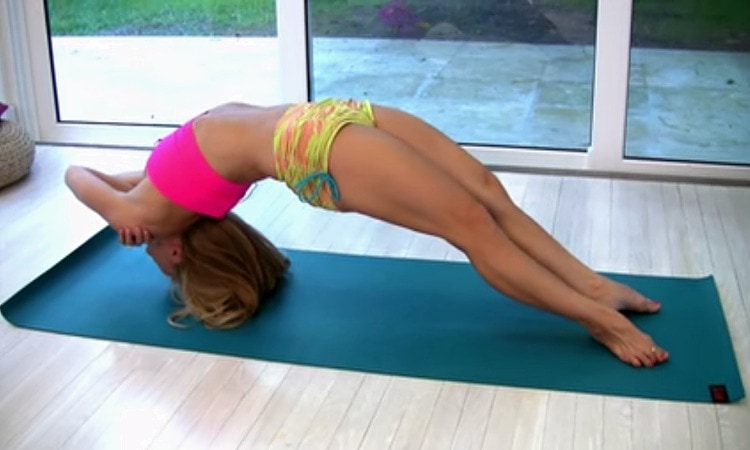While many backbends are challenging, some invoke a level of fear in yoga students. Setu Bandhasana is the last posture of the Ashtanga Yoga Primary Series and it often falls into the category of the fearful backbends.
While this posture is meant to represent a bridge that is supported with the power of the pelvic floor, many students are hesitant about moving deeply into it out of caution against harming the delicate joints of the neck. I’ve even known students to completely avoid practicing this posture simply out of a mental resistance to placing weight on the head while the spine is in an extended position.
But yoga demands that you go to the places that scare you with a courageous heart, and Setu Bandhasana is the perfect place to test your inner resolution.
Combat Your Fear, Practice Safely
The first step in combatting fear is learning the technical and anatomical directions that make the posture safe to practice. Start off in a reclining position set up for Setu Bandhasana by bending your knees, placing the heels together, and the toes apart. Keep your feet relatively far away from your hips, up to three feet away, depending on the length of your legs. If your feet are not far enough away from your hips, you will not be able to safely enter the posture, so take the time to set this up properly.
Make sure that your feet are flexed, the toes point away and the outer edges of your feet are pressed into the ground. Next, hold onto your outer thighs with both hands and use your elbows to prop your torso up in a gentle spinal extension—curling the head under, and resting the top of the head on the ground. This preparatory posture mirrors the same pattern in the more common backbend known as the Fish Posture, Matsyasana.
Finally, cross your arms over each other on top of your chest, and hold the opposite shoulder with your hands. While it may be tempting to use your hands to lift up, the power of the posture ideally comes from the legs, the back, and the pelvic floor. If you use your hands too much, you will avoid the necessary neuromuscular activation that will one day fully support your body in Setu Bandhasana.
Safety Precautions
For anyone with neck issues, it might be enough simply to stay for five breaths in the preparatory posture. When you are ready to proceed, inhale as you activate your pelvic floor, press in through the outer edges of your feet, send the iliac crests up and forward and allow the hips to elevate. Then as the hips begin to rise upwards, allow the full bridge to be created by rolling through the joints of the whole spine in a extended position.
Lift the sternum up and forward to make space throughout the thoracic spine. Roll through the joints of the cervical spine to continue the extension all the way out through the top of the head. Once you are fully lifted and the legs are straight, point your toes. Keep this movement oriented towards the center line of the body, and do not allow yourself to pivot from side to side. If you are weary of losing your balance, then it is advised to leave the hands on the floor next to you head like training wheels.
If you go for that option, be careful not to do the work of the posture with your hands. After you reach your maximum activation, come down in the same way that you entered the posture. Exhale as you send your hips down and allow the body to fold into the hip joints to return your pelvis to the floor. Once your hips are settled into the ground, exhale again as you settle your whole torso back to the ground and come fully off your spinal extension.
What To Expect
Throughout the movement, there will be sensation in the neck so do not expect to feel zero pressure. The strength gained in the neck from Setu Bandhasana will be tested in more advanced postures, such as standing up and dropping from Urdhva Dhanurasana, Eka Pada Sirsasana and more challenging headstand postures. Slight discomfort in yoga is not something to avoid, however, the joints of the body should never be in pain.
If you feel a sharp or pinching sensation in the joints of the spine, that most likely means that you have pushed too hard into the spinal extension without the support of the pelvic floor. Go back to the preparatory posture and work on alignment and technique. But if you enter the posture with good technique and simply feel an uncomfortable sensation, rest assured that you are doing the inner work of yoga.
Not only are you actually strengthening the neck and back muscles, but you are also strengthening the mind by accepting some necessary discomfort along the road to building true strength by going bravely into the places that scare you.


